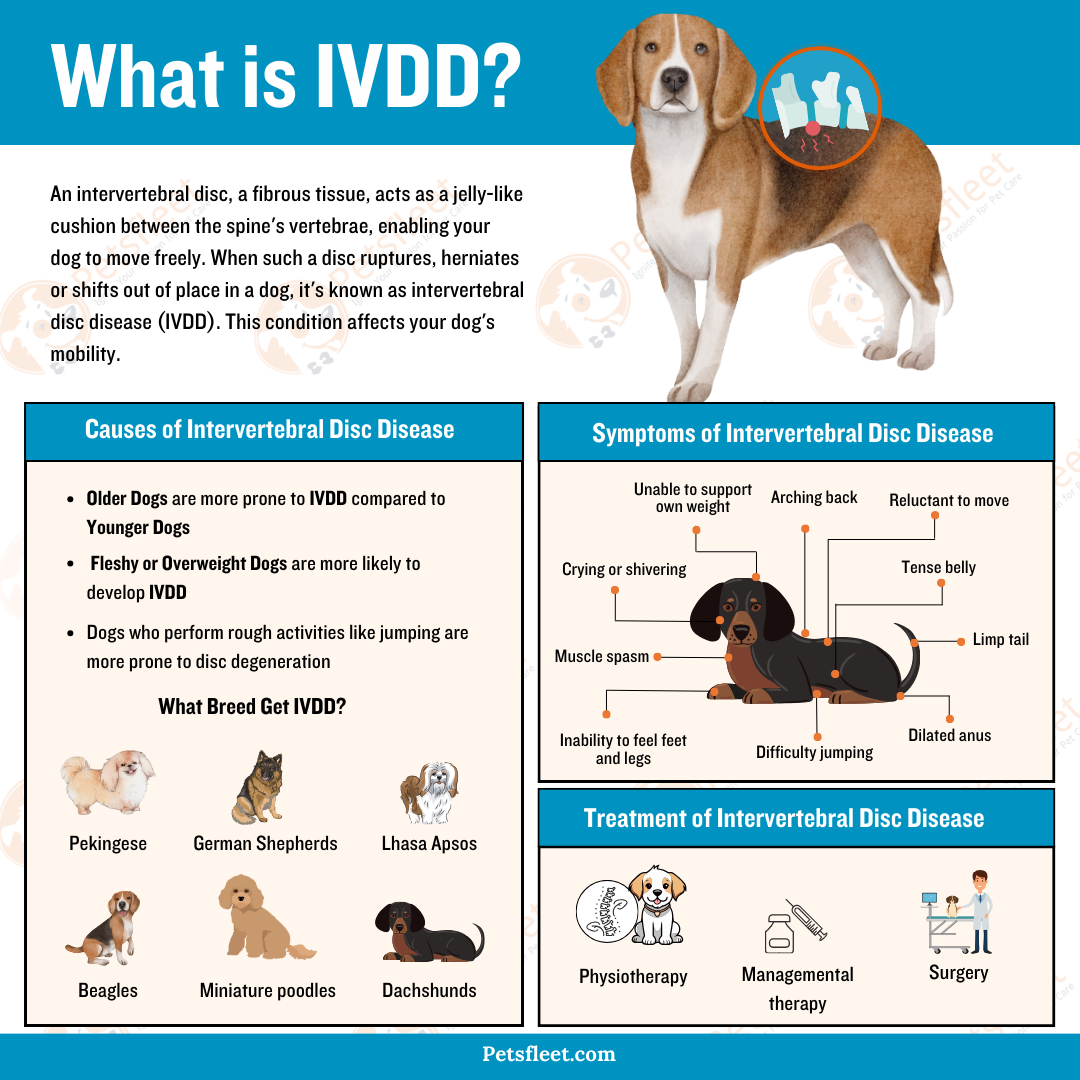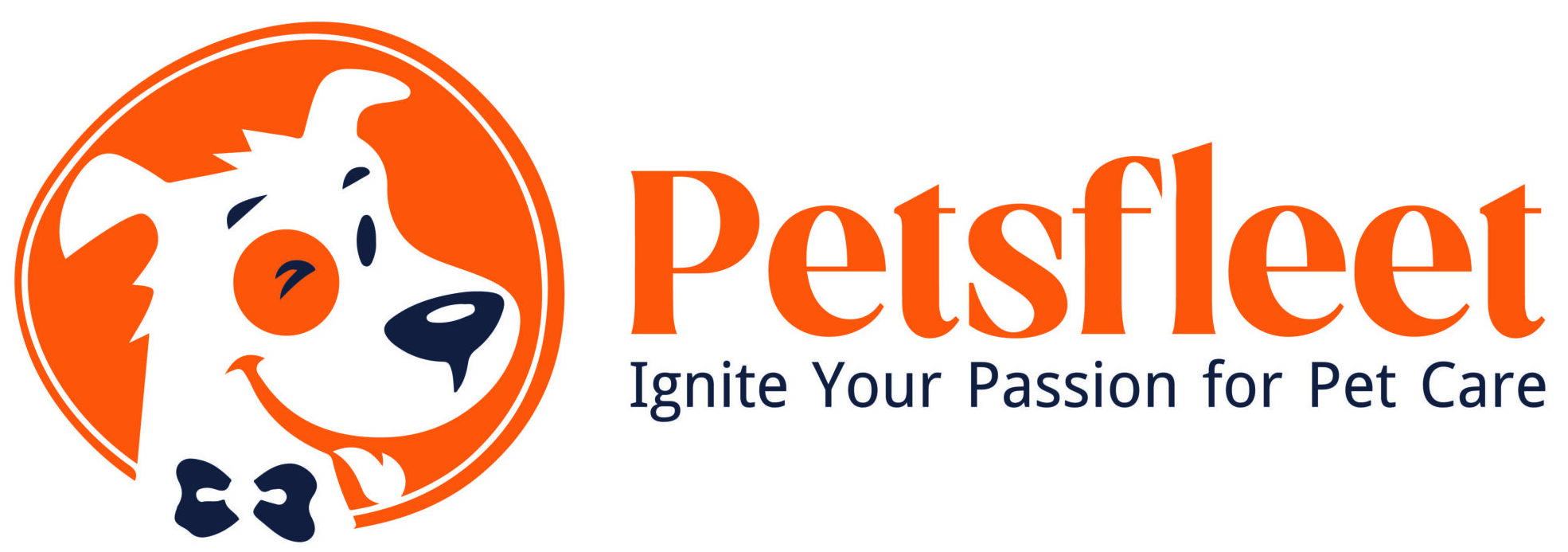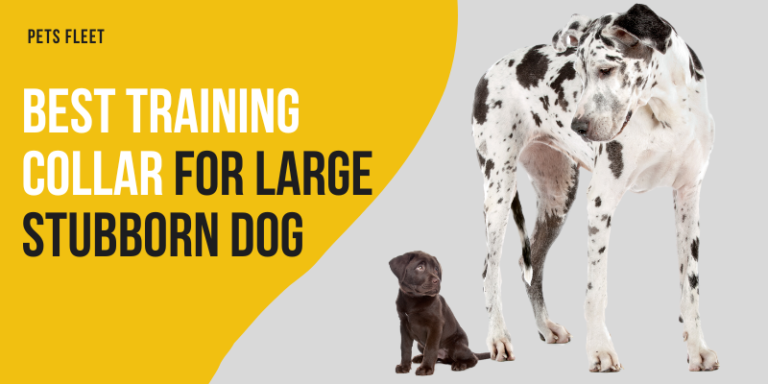Understanding Intervertebral Disc Disease in Dogs and Treatment

The health and well-being of our pets are of utmost importance to us as dog owners. In spite of intervertebral disc disease being a daunting diagnosis, with the right information and prompt action, your furry friend can live a comfortable and happy life.
The purpose of this guide is to provide you with a thorough understanding of intervertebral disc disease in dogs (IVDD) and the treatment options you can choose from to help your doggy fight it.
Let’s start with the basic concepts.
What is intervertebral disc disease in dogs?
A fibrous tissue called an intervertebral disc serves as a jelly-like cushion between the vertebrae in the spine. In addition to providing your dog with ease of movement, these discs allow him or her to run, jump, and move easily. A ruptured, herniated, or displaced intervertebral disc in a dog is called intervertebral disc disease or simply IVDD.
A force or condition that causes extreme pressure on intervertebral discs leads to swelling. As a result, the spinal cord can be severely damaged. You may notice that your dog feels pain while walking and has limited mobility as a result of minor spinal cord damage. Those with severe spinal cord injuries can lose their ability to walk permanently.
Intervertebral disc disease in dogs requires immediate veterinary attention due to its extreme consequences.
What are the causes of intervertebral disc disease in dogs?
Several reasons are out there to witness IVDD in dogs; however, the most prevalent cause is intervertebral disc degeneration. Here, we discuss some major factors that contribute to degeneration.
Genetics – Certain breeds are predisposed to develop IVDD because of their specific genetic linkage. Some of them include:
- Pekingese
- Dachshunds
- Lhasa Apsos
- Beagles
- Miniature poodles
- German Shepherds
- Doberman Pinschers
- Cocker Spaniels
Age – With the advancement in age, the vertebral discs of dogs become less flexible, thus prone to trauma. So, senior dogs are susceptible to IVDD compared to younger dogs.
Obesity – Fleshy or overweight dogs are more likely to develop IVDD because their spine and discs face extra stress. That’s why weight management is important.
Trauma – Sudden accident or acute trauma leads to herniation of the disc immediately. It sometimes just triggers or enhances the pre-existing degeneration of discs.
Excessive activity – Dogs who perform rough activities like jumping are more prone to disc degeneration; thus, chances of IVDD are high.

What are the symptoms of intervertebral disc disease in dogs?
Symptoms of IVDD vary in dogs depending on the severity of damage and the part of the spine affected. Here, we have discussed some common symptoms that are specific to a particular part of the part.
Symptoms of Cervical IVDD (neck region)
- Arching back
- Inability to stand
- Knuckling of all paws
- Reluctant to move
- Inability to feel feet and legs
- Crying or shivering
- Head held low
- Unable to walk normally
- Unable to support own weight
Symptoms of Thoracolumbar IVVD (back region)
- Tense belly
- Crossing back legs while walking
- Dragging or knuckling of rear paws
- Weak hind legs
- Unable to walk normally
- Inability to support weight
- Loss of sensation in back legs
- Muscle spasm
Symptoms of Lumbosacral IVDD (lower back region)
- Difficulty jumping
- Fecal and urinary incontinence
- Dilated anus
- Limp tail
You can also read: Factsheet for Myositis in Dogs’ leg
How to diagnose IVDD in dogs?
If you feel any of the above-mentioned symptoms in your doggy and want to know whether it is an IVDD case or not, you need to seek veterinary care immediately. The veterinarian can better help you to diagnose the exact cause by recommending some of these tests depending on the situation:
X-rays – Helps to identify small changes like disc calcification or disc narrowing.
MRI/CT scan – The best option is to reveal the exact location and severity of the issue with the help of detailed imaging of the spine.
Myelogram – A type of contrast radiography in which a contrast dye is incorporated into the spine of a dog, and then visuals are taken by using X-rays.
Neurological examination – In which the veterinarian identifies the extent of neurological damage by using your dog’s reflexes, sensory perception, and muscle strength.
What treatment options are available to cure intervertebral disc disease (IVDD) for dogs?
The treatment of intervertebral disc disease in dogs is entirely based on the condition and extent of the damage. Here are some major protocols that are followed to treat IVDD in dogs.
Managemental therapy – In a mild scenario, providing proper rest to your dog in a crate or some confined space with medication alone can heal the affected portion. NSAIDs are used for the alleviation of pain and to get rid of inflammation.
Physiotherapy – A dog who is in a recovery phase is evident to heal better after getting massages and regular exercises that help to improve its muscle strength and coordination.
Surgery – In severe cases where there are no chances of recovery from simple conservative therapies, surgical intervention is necessary. Two types of surgical procedures are in practice for IVDD in dogs:
- Hemilaminectomy: This procedure opts to decompress the affected area of the intervertebral disc by accessing it after removing the part of the vertebra.
- Pediculectomy: Such a surgical procedure involves removing the whole affected disc. Afterward, the empty space is healed by the surrounding tissues.
Chiropractic care – Some dogs with IVDD can get relief after getting chiropractic adjustments that help mitigate symptoms like pain.
Conclusion:
Understanding and addressing IVDD can help your dog live a longer and healthier life. Depending on your dog’s specific condition, your veterinarian may suggest a customized treatment plan.
FAQs
Can intervertebral disc disease be completely curable with treatment in dogs?
The treatment of IVDD may be able to completely cure your dog with IVDD because of various factors, like the severity of the disease. For successful outcomes, you need to address the situation timely with prompt treatment.
Are there any alternative therapies for IVDD in dogs besides medication and surgery?
Yes, there are certain supportive treatment options available along with traditional treatments. These include acupuncture and chiropractic care. First, consult your vet before making any decision.
Can IVDD recur after treatment?
Yes, there are greater chances of recurring IVDD in dog breeds that are more prone than normal dogs. You need to do follow-ups to monitor your dog’s spinal health and follow recommendations by the vet.
What is the prognosis of dogs with IVDD?
The prognosis depends on the extent of damage and the severity of the condition. However, with timely intervention and immediate care, you can ensure your dog fulfills his life.






